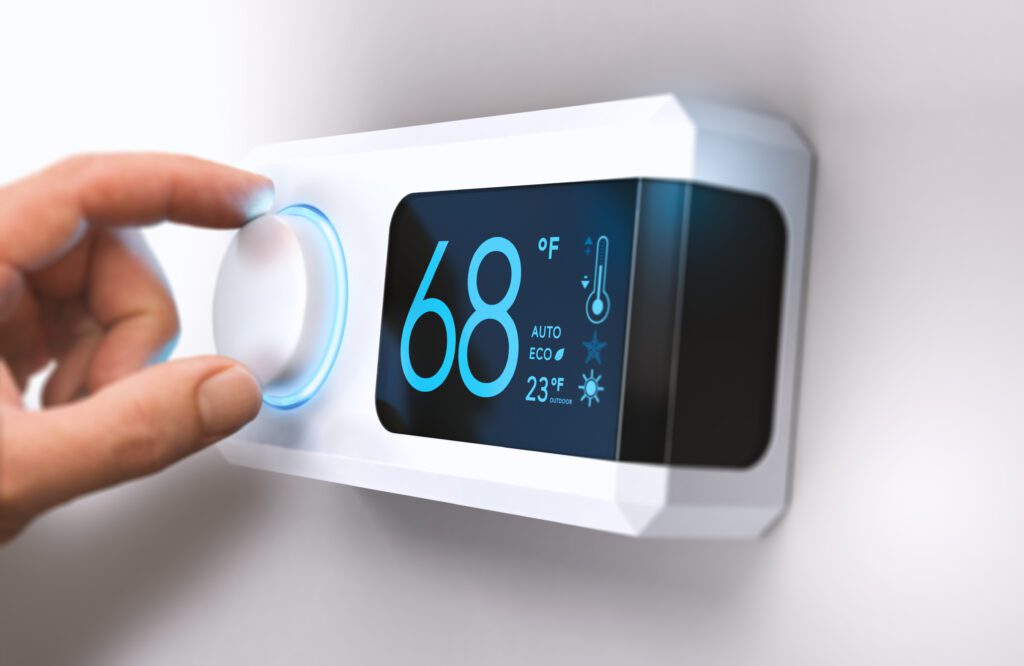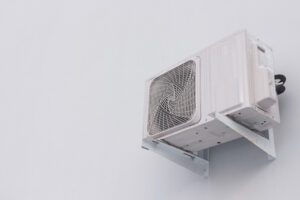Smart thermostats have become increasingly popular among Martinsburg homeowners due to the many benefits they offer. Not only do these devices provide more control over your home’s heating and cooling systems, but they also help save energy and reduce utility costs. In this ultimate guide, we will explore the basics of smart thermostats, discuss their benefits, guide you on how to choose the right one for your home, explain the installation process, and troubleshoot common issues that may arise.
Understanding the Basics of Smart Thermostats
Before diving into the details, let’s start by understanding what exactly a smart thermostat is and how it works.
Smart thermostats have revolutionized the way we control the temperature in our homes, offering convenience, energy efficiency, and customization like never before. These devices are designed to make your life easier by allowing you to adjust your home’s temperature settings from anywhere, at any time.
What is a Smart Thermostat?
A smart thermostat is a device that allows you to control and monitor your home’s temperature settings remotely using a smartphone, tablet, or computer. It goes beyond the functionality of a traditional thermostat by offering advanced features such as Wi-Fi connectivity, learning capabilities, and integration with smart home systems.
With a smart thermostat, you can set schedules, adjust temperatures, and even receive alerts and notifications about your HVAC system. Some models can even detect when you’re away from home and adjust the temperature to save energy.
How Does a Smart Thermostat Work?
A smart thermostat works by connecting to your home’s heating and cooling system, typically through Wi-Fi or other wireless technologies. Once connected, you can control the thermostat settings remotely using a dedicated app or through voice commands if integrated with a smart home system like Amazon Alexa or Google Assistant.
These devices use sensors to monitor temperature, humidity, and occupancy, allowing them to make automatic adjustments to keep you comfortable while also saving energy. By learning your habits and preferences, smart thermostats can create personalized schedules that optimize your home’s energy usage.
Smart thermostats often come with advanced features such as learning algorithms that analyze your preferences and create personalized heating and cooling schedules. They can also provide energy consumption reports and suggestions for optimizing your HVAC system’s efficiency.
Investing in a smart thermostat is not only a smart choice for your comfort but also for the environment. By reducing energy waste and improving efficiency, these devices play a significant role in creating a more sustainable future.
Benefits of Using Smart Thermostats
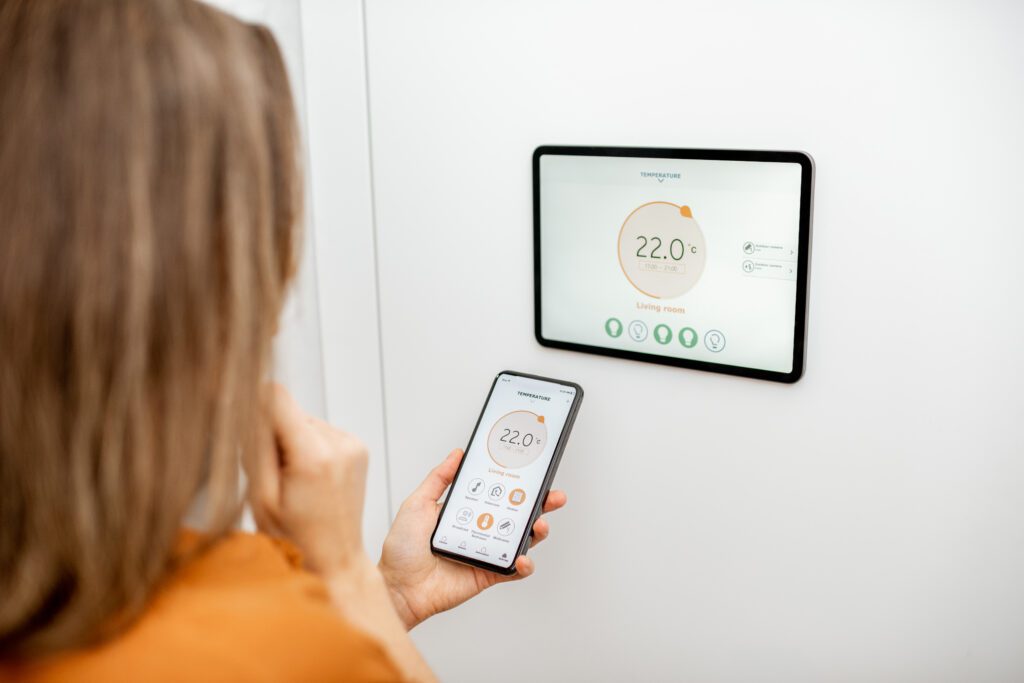
Now that we understand the basics, let’s explore the numerous benefits that smart thermostats bring to Martinsburg homeowners.
Smart thermostats offer a wide range of advantages that go beyond just controlling the temperature of your home. Let’s take a closer look at some of these benefits.
Energy Efficiency and Cost Savings
One of the primary advantages of smart thermostats is their ability to optimize energy usage, leading to significant cost savings over time. By learning your heating and cooling patterns, these devices can automatically adjust temperature settings to maximize energy efficiency.
For instance, smart thermostats can detect when you’re away from home and adjust the temperature accordingly to save energy. They can also adapt to weather conditions, automatically adjusting settings to maintain a comfortable temperature while minimizing energy consumption.
By reducing unnecessary energy usage, smart thermostats can lower your utility bills without sacrificing comfort. This not only benefits your wallet but also helps to reduce your carbon footprint.
Convenience and Comfort
Smart thermostats offer unmatched convenience and comfort. With the ability to control your HVAC system remotely, you can easily adjust the temperature from anywhere using your smartphone. Whether you’re in bed, at work, or even on vacation, you can ensure your home is at the perfect temperature when you arrive.
Furthermore, many smart thermostats come with geofencing capabilities. This feature uses your smartphone’s location to detect when you’re nearing home, automatically adjusting the temperature to your preferred settings. Say goodbye to coming home to a chilly house in the winter or a stuffy one in the summer.
Additionally, some smart thermostats can monitor indoor air quality and humidity levels, ensuring that your home remains a comfortable and healthy environment for you and your family.
Integration with Smart Home Systems
If you already have a smart home system or plan to invest in one, a smart thermostat can seamlessly integrate into your ecosystem. Integration allows you to control your thermostat using voice commands and create automation routines that sync with other smart devices.
For example, you could set up a routine that turns off your HVAC system when you leave the house, adjusts the temperature based on the time of day, or even responds to voice commands like “Hey Google, turn up the heat.”
Furthermore, smart thermostats can work in tandem with other smart devices such as smart lighting systems or smart blinds. Imagine walking into a perfectly lit and comfortably heated home after a long day at work, all thanks to the integration of these smart technologies.
As you can see, smart thermostats offer a multitude of benefits that go beyond just temperature control. From energy efficiency and cost savings to convenience and integration with smart home systems, these devices are revolutionizing the way we manage our home’s climate. Consider upgrading to a smart thermostat and experience the difference it can make in your daily life.
Choosing the Right Smart Thermostat for Your Home
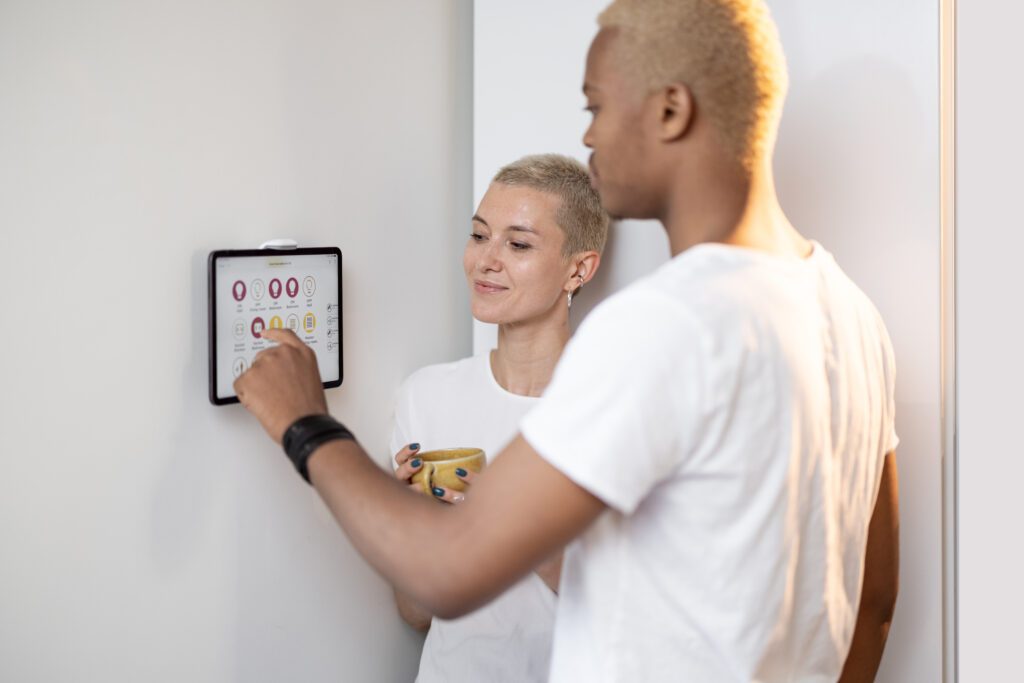
Now that you’re aware of the benefits, let’s delve into the factors you should consider when selecting a smart thermostat for your Martinsburg home.
When it comes to choosing a smart thermostat, it’s important to take into account several key features that will enhance your overall experience:
- Compatibility with your HVAC system: Ensuring that the thermostat you choose is compatible with your heating and cooling systems is crucial. This will help you avoid any compatibility issues and ensure a seamless integration.
- Smart Control: Look for devices that offer a user-friendly interface, easy app installation, and intuitive control options. Being able to control your thermostat effortlessly from your smartphone or other smart devices can greatly enhance your convenience and comfort.
- Learning Capabilities: Opt for a thermostat that can learn your preferences and create schedules accordingly. This feature allows the thermostat to adapt to your lifestyle and automatically adjust the temperature based on your habits, ultimately saving you energy and money.
- Energy Monitoring: Consider models that provide energy consumption reports and recommendations for reducing energy usage. Having access to detailed energy reports can help you identify areas where you can make adjustments to optimize your energy efficiency.
- Geofencing: If convenience is a top priority, geofencing capabilities can enhance your smart thermostat experience. With geofencing, your thermostat can detect when you’re away from home and adjust the temperature accordingly, ensuring energy savings without sacrificing comfort.
Now that you have a better understanding of the key features to consider, let’s explore some of the top brands in the smart thermostat market:
- Nest: Nest thermostats are known for their learning capabilities and integration with other smart home devices. With Nest, you can expect a thermostat that adapts to your schedule, learns your preferences, and helps you save energy effortlessly.
- Ecobee: Ecobee offers advanced features such as occupancy detection and compatibility with multiple smart home platforms. Their thermostats are designed to provide precise temperature control, energy savings, and seamless integration with your smart home ecosystem.
- Honeywell: Honeywell is a trusted name in the industry and offers an extensive range of smart thermostats, catering to different needs and budgets. Whether you’re looking for basic functionality or advanced features, Honeywell has options that can meet your requirements.
By considering these key features and exploring reputable brands, you’ll be well-equipped to choose the right smart thermostat for your Martinsburg home. Remember, a smart thermostat not only adds convenience to your life but also helps you save energy and reduce your carbon footprint.
Installation Process for Smart Thermostats
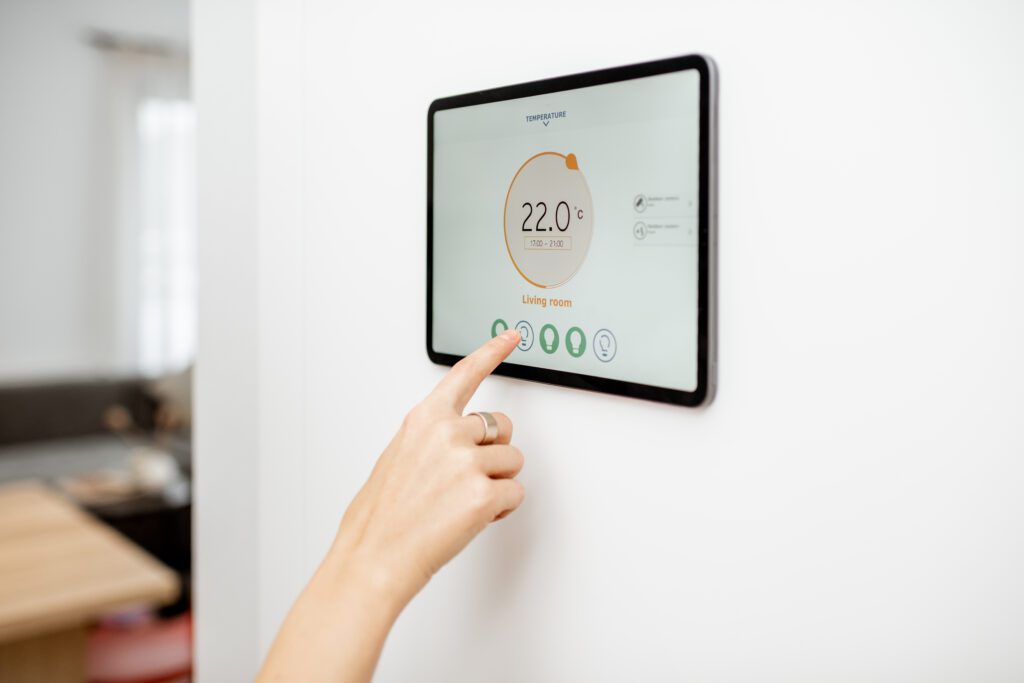
Once you’ve chosen the right smart thermostat for your home, you’ll need to install it. Let’s explore the installation process.
Installing a smart thermostat can be an exciting and rewarding experience. Not only does it provide convenience and energy savings, but it also gives you a sense of accomplishment knowing that you’ve successfully upgraded your home. In this expanded version, we’ll delve deeper into the installation process, offering you additional insights and tips.
DIY Installation vs. Professional Installation
Depending on your technical expertise and comfort level with electrical work, you can install a smart thermostat yourself or hire a professional electrician to handle the installation for you.
If you feel confident in your abilities and understand the wiring of your HVAC system, DIY installation is a viable option. It allows you to take full control of the process and saves you money on installation fees. However, if you’re unsure or uncomfortable working with electrical components, it’s best to leave the installation to a professional. This ensures proper installation, preventing any issues or potential damage.
When hiring a professional, it’s essential to choose someone with experience in smart thermostat installations. They will have the necessary knowledge and tools to complete the job efficiently and effectively.
Step-by-Step Guide to Installing a Smart Thermostat
If you choose to install the smart thermostat yourself, follow these general steps:
- Turn off the power: Start by turning off the power to your HVAC system at the circuit breaker to prevent any electrical accidents. Safety should always be your top priority.
- Remove the old thermostat: Unscrew the old thermostat from the wall and disconnect the wiring. Take note of the wire labels or take pictures for reference during installation. This step is crucial as it ensures a smooth transition from the old thermostat to the new one.
- Mount the new thermostat: Install the base plate of the smart thermostat onto the wall and connect the appropriate wires based on the manufacturer’s instructions. It’s important to follow the instructions carefully to ensure a secure and proper connection.
- Test the connections: Double-check that all connections are secure before attaching the thermostat display to the base plate. This step ensures that the thermostat functions correctly and avoids any potential issues in the future.
- Configure the settings: Follow the manufacturer’s instructions to set up your smart thermostat, connect it to Wi-Fi, and personalize your preferences. This is where the magic happens! You’ll have the opportunity to customize your thermostat’s settings, such as temperature thresholds, scheduling, and even integrating it with other smart devices in your home.
Remember, during the installation process, it’s essential to refer to the specific instructions provided by the manufacturer. Each smart thermostat may have slight variations in terms of wiring and setup, so it’s crucial to follow the guidelines to ensure a successful installation.
By following these steps and taking the necessary precautions, you’ll be well on your way to enjoying the benefits of a smart thermostat. From increased energy efficiency to enhanced comfort, your new smart thermostat will transform the way you interact with your home’s heating and cooling system.
Troubleshooting Common Smart Thermostat Issues
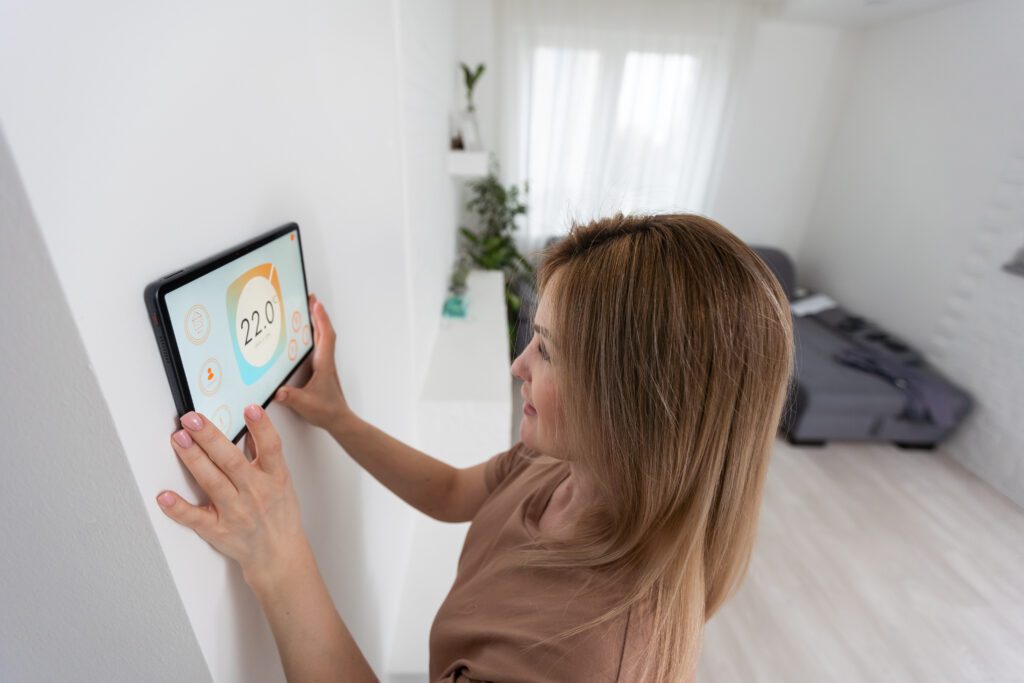
Despite their many benefits, smart thermostats may occasionally encounter issues. Let’s address some common problems and troubleshooting tips.
Connectivity Problems
If your smart thermostat is having trouble connecting to your home Wi-Fi network, follow these steps:
- Restart the thermostat: Power cycle the thermostat by turning it off, waiting a few seconds, and turning it back on.
- Check your Wi-Fi signal: Ensure that your Wi-Fi router is in range and working correctly. Consider using a Wi-Fi extender if your thermostat is located far from the router.
- Reset the network settings: If the issue persists, try resetting the thermostat’s network settings and reconnecting it to your Wi-Fi network.
Thermostat Not Responding
If your smart thermostat is unresponsive, it might be due to a power or software issue. Try the following troubleshooting steps:
- Check the power supply: Confirm that the thermostat is receiving power from the HVAC system or batteries, depending on the model.
- Restart the thermostat: Similar to connectivity problems, power cycling the thermostat can often resolve software glitches.
- Check for firmware updates: Ensure that your thermostat’s firmware is up to date by checking the manufacturer’s website or app for available updates.
Inaccurate Temperature Readings
If your smart thermostat’s temperature readings don’t match the actual room temperature, consider these potential solutions:
- Calibrate the thermostat: Some models allow you to manually adjust the temperature readings to match the actual temperature. Refer to the manufacturer’s manual for guidance.
- Positioning matters: Make sure the thermostat is not exposed to direct sunlight, drafts, or heat sources, as this can interfere with accurate readings.
- Check for sensor obstruction: Dust, debris, or any other obstructions around the thermostat’s sensor can impact its accuracy. Clean the area around the sensor gently.
By following these troubleshooting steps, you should be able to address most common smart thermostat issues. If the problem persists or is beyond your expertise, consider contacting the manufacturer or seeking assistance from a professional.
In conclusion, smart thermostats provide Martinsburg homeowners with enhanced control, convenience, and energy savings. Understanding their basics, benefits, and installation process is crucial to making an informed decision regarding the right smart thermostat for your home. By troubleshooting common issues, you can ensure that your smart thermostat works seamlessly and maximizes your comfort and energy efficiency.

